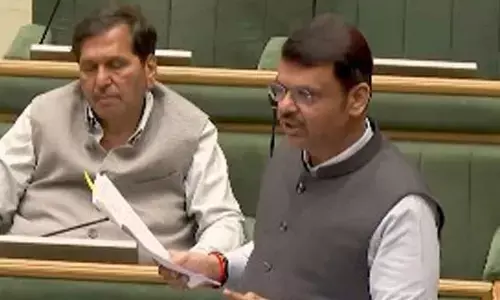Tibet central to Indo-China conflict

Tibet central to Indo-China conflict
He who holds Tibet dominates the Himalayan piedmont; he who dominates the Himalayan piedmont threatens the Indian subcontinent, and he who threatens the Indian subcontinent may well have all of South Asia within his reach, and with that, all of Asia -George Ginsburg and Michael Mathos.
He who holds Tibet dominates the Himalayan piedmont; he who dominates the Himalayan piedmont threatens the Indian subcontinent, and he who threatens the Indian subcontinent may well have all of South Asia within his reach, and with that, all of Asia -George Ginsburg and Michael Mathos. Hence, China holds Tibet and continues to exploit it.
But, why is India hesitant to call China an occupying force in Tibet? How many years do we need to call a spade a spade? Here is China blaming India for "using" Tibetans in exile against it in the Himalayas. Of course, no one would have known this fact if India were not to say so. That an elite force was used against China by India the other day to thwart its attempts is seen as a sin committed by India by China.
Its ruling party mouthpieces like Global Times that circulate as newspapers and media in the world are unable to digest the fact that India has outwitted China in the icy heights due to which it could not illegally occupy some more Indian territory. That it did by using exiled Tibetan youth and not its regular army seems to have riled China further. Now Tibetans are asking India the question that has been in the back of their minds since their occupation by China.
Why does not India acknowledge the centrality of Tibet to Indo-China equations or its conflicts?. The Britishers have left India a troubled legacy all along with its borders before leaving India. And Jawaharlal Nehru did little service to India in acknowledging China's right over Tibet without understanding the full implications of the same for India and its future. As Tibetan scholars put it with clarity Mao employed a strategic ingenuity in terms of looking at Tibet as the backdoor for China's expansion and dominance in Asia. On the other hand, some of India's elite still consider it as a buffer zone between India and China.
This difference in approach to the Tibet issue has become the crux of the Sino-India rivalry. Both India and China are increasingly aware of the geostrategic importance of Tibet and the intimate connection their strategic interests have with Tibet. If Tibet is a designated "core issue" in Beijing's national interest, it is equally vital to the Indian national security. Tibet thus presents itself, even today, as central to the Sino-Indian conflict. However, given the asymmetric nature of India-China relations, the Tibet issue in Sino-India relations has been consciously pushed towards the shadows of the diplomatic corridors between the two nations. But, times have changed.
It is time India acknowledged the centrality of Tibet in dealing with China. India should remember that China holds on to Tibet to lay its claim on 'southern Tibet' a part of India. It refuses to acknowledge the Shimla agreement entered during the British rule by it. Hence we have the Galwans. Using more Tibetans seething in anger against China should be encouraged. Not just as a mercenary force but by acknowledging their contribution. After all, it is a common cause. Remember China uses Pakistanis against us.














